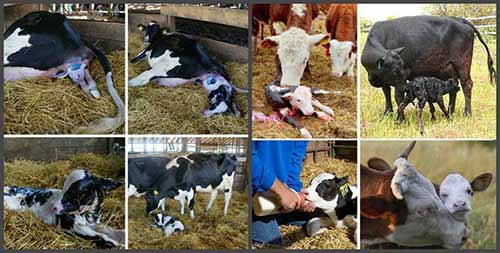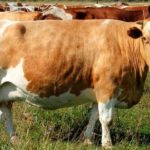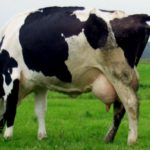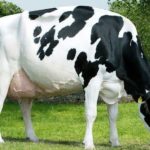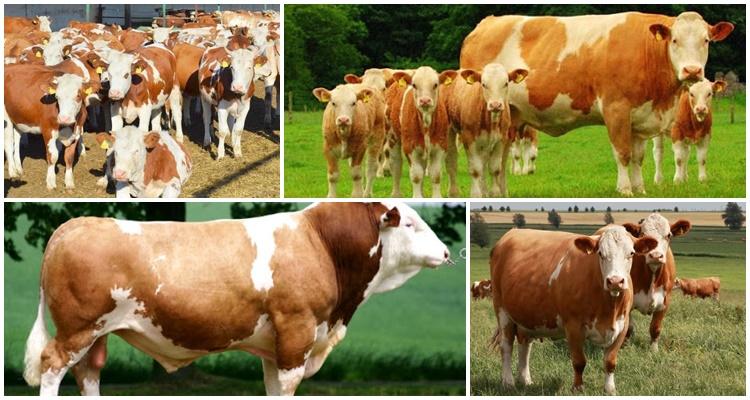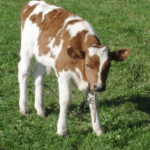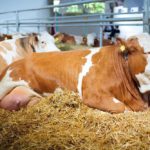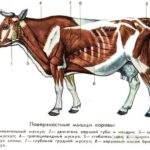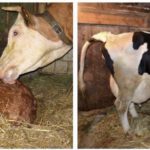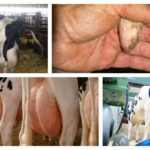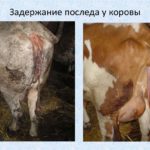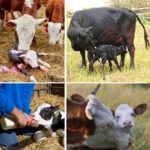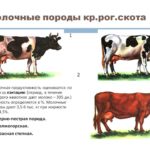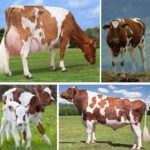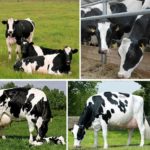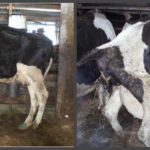The main event for the farmer is the birth of a calf. To calculate the expected date of birth, a cow calving calendar is usually used. To do this, you need to know the mating date. An error of 10-14 days occurs because pregnant cow carries a calf for 285-300 days. Knowing the approximate calving date, the animal owner will have time to prepare and reduce the risk of problems associated with the birth of the calf.
Calving date after insemination
A cow is pregnant for no more than 300 days. The approximate date of birth of the cub is calculated using the formula:
((fertilization day) +11) / (month number – 3) = (calving date)
Fertilization day – the day on which insemination occurred, the day pregnancy occurred.
The month number is a serial number (January is assigned one, February 2, and so on).
Calving date is the calf's expected birthday.
Numerical values remain constant.
Calculation example:
The cow was inseminated on May 4th. When you plug the data into the formula, you get the following result:
(4 +11) / (5-3) = 15/2
The approximate calving date is February 15th.
If the amount exceeds the number of days in a month, then 30 is subtracted from it.
The cow was inseminated on November 24th.
(24+11) / (11-3) = 36 /8 = 6/8.
The approximate calving date is August 6th.
Pregnancy and calving calendar for cows
After covering the cow, its pregnancy is determined. There are special tests for this. They often give erroneous results. Therefore, livestock farmers create a pregnancy schedule. The date of possible insemination is recorded in it, and the date of calving is calculated.
To determine the approximate date of birth of the baby, experienced farmers created a calendar of pregnancy and calving of cows. Based on the date of fertilization, the expected date of birth is calculated. In this case, there is no need to calculate using the formula.
Pregnancy calculator:
| January | October | April | January | July | April | October | July |
| 1 | 7 | 1 | 5 | 1 | 6 | 1 | 7 |
| 5 | 11 | 5 | 9 | 5 | 10 | 5 | 11 |
| 10 | 16 | 10 | 14 | 10 | 15 | 10 | 16 |
| 15 | 21 | 15 | 19 | 15 | 20 | 15 | 21 |
| 25 | 31 | 25 | 29 | 25 | 30 | 25 | 31 |
| February | November | May | February | August | May | November | August |
| 1 | 7 | 1 | 4 | 1 | 7 | 1 | 7 |
| 5 | 11 | 5 | 8 | 5 | 11 | 5 | 11 |
| 10 | 16 | 10 | 13 | 10 | 16 | 10 | 16 |
| 15 | 21 | 15 | 18 | 15 | 21 | 15 | 21 |
| 20 | 26 | 20 | 23 | 20 | 26 | 20 | 26 |
| 25 | December 1 | 25 | 28 | 25 | 31 | 25 | 31 |
| March | December | June | March | September | June | December | September |
| 1 | 5 | 1 | 7 | 1 | 7 | 1 | 6 |
| 5 | 9 | 5 | 11 | 5 | 11 | 5 | 10 |
| 10 | 14 | 10 | 16 | 11 | 16 | 11 | 15 |
| 15 | 19 | 15 | 21 | 15 | 21 | 15 | 20 |
| 20 | 24 | 20 | 26 | 20 | 26 | 20 | 25 |
| 25 | 29 | 25 | 31 | 25 | July 1 | 25 | 30 |
The odd numbered columns indicate the date of insemination by day and month. In even-numbered columns - the date of expected calving.
Calving calendar:
| Coverage time | Time of birth | Coverage time | Time of birth |
| January | October November | July | April May |
| 01.01 | 12.10 | 05.07 | 15.04 |
| 11.01 | 22.10 | 15.07 | 25.04 |
| 21.01 | 01.11 | 25.07 | 05.05 |
| 31.01 | 11.11 | August | May June |
| February | November December | 04.08 | 15.05 |
| 10.02 | 21.11 | 14.08 | 25.04 |
| 20.02 | 01.12 | 24.08 | 04.06 |
| March | December | September | June July |
| 02.03 | 11.12 | 03.09 | 14.06 |
| 12.03 | 21.12 | 13.09 | 24.06 |
| 22.03 | 31.12 | 23.09 | 04.07 |
| April | January | October | July August |
| 01.04 | 10.01 | 03.10 | 14.07 |
| 11.04 | 20.01 | 13.10 | 24.07 |
| 21.04 | 30.01 | 23.10 | 03.08 |
| May | February March | November | Aug. Sept |
| 01.05 | 09.02 | 02.11 | 13.08 |
| 11.05 | 19.02 | 12.11 | 23.08 |
| 21.05 | 01.03 | 22.11 | 02.09 |
| 31.05 | 11.03 | ||
| June | March, April | December | September October |
| 10.06 | 21.03 | 02.12 | 12.09 |
| 20.06 | 31.03 | 12.12 | 22.09 |
| 30.06 | 10.04 | 22.12 | 02.10 |
Fetal development
After a successful pregnancy, pregnancy occurs. During this period, the cow’s body goes through the following phases:
- Germinal phase. The fertilized egg attaches to the wall of the uterus.
- Embryonic phase. The fertilized egg is implanted into the uterine wall, and organs and systems are formed in the embryo.
- Fetal phase. The placenta appears, body weight increases, and the fetus is endowed with functions.
Embryo development occurs gradually over 285 days:
- In the first month, the organs of vision and the oral cavity are formed. The skin is replaced by a vascular network, and gill slits appear. The weight of the embryo is no more than 1 gram.
- After the second month, important vital organs appear. Active growth of the embryo is observed, the placenta is formed. The length of the embryo reaches 8 cm, and the weight increases to 30 grams.
- From three to six months, the reproductive system, testes, and horns appear. The embryo develops into a calf. The length of the embryo reaches 45 cm, the weight approaches 4 kilograms.
- Starting from the sixth month of pregnancy, hair actively grows, and from the seventh month internal organs and incisors appear.
After this, a calf is born.
What complications can there be?
The health of the pregnant cow is closely monitored. A pregnant animal is vulnerable and susceptible to viral, fungal, and bacterial infections. Proper care and nutrition reduce the risk of infection to a minimum. The heifers' food is enriched with useful minerals, trace elements and iodine. The drugs Alfort D3, Sedimin, Chiktonik, and Ivermek are used as prophylaxis. Consultation with a veterinarian is required. Skin parasites are poisoned with an antiseptic.
Bacterial infections in livestock are not uncommon. Main signs of the disease:
- Giving up chewing gum.
- Diarrhea.
- Stomach ache.
- Rectal prolapse.
For respiratory diseasesx ways, the cow begins to wheeze, fever, and nasal mucus. You should especially be wary of clostridiosis and brucellosis. These infections are fatal to the animal. Complications from these infections are intoxication of the body, disruption of the nervous system and miscarriage.

